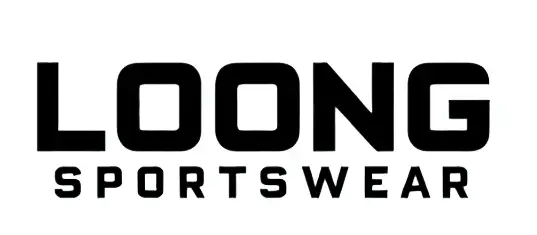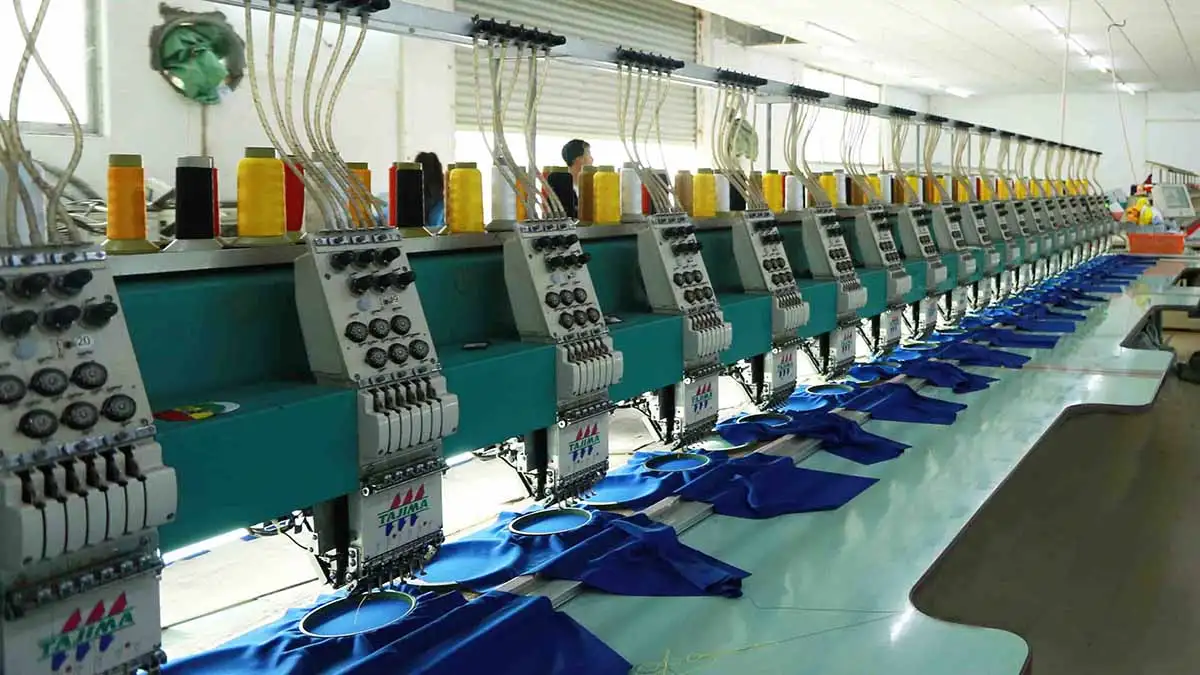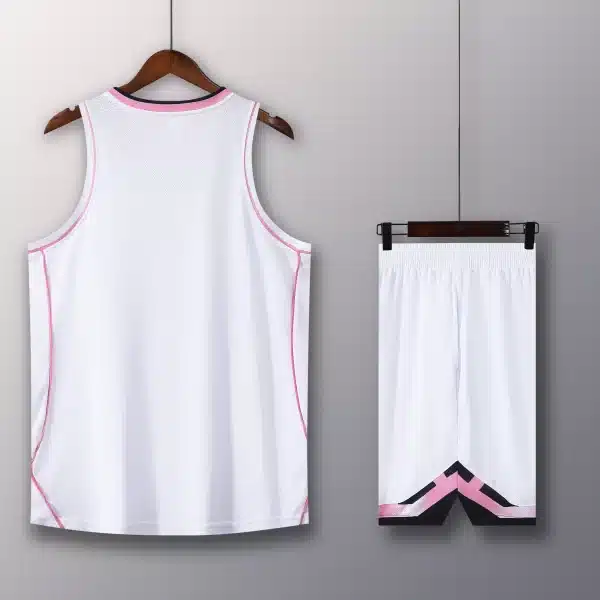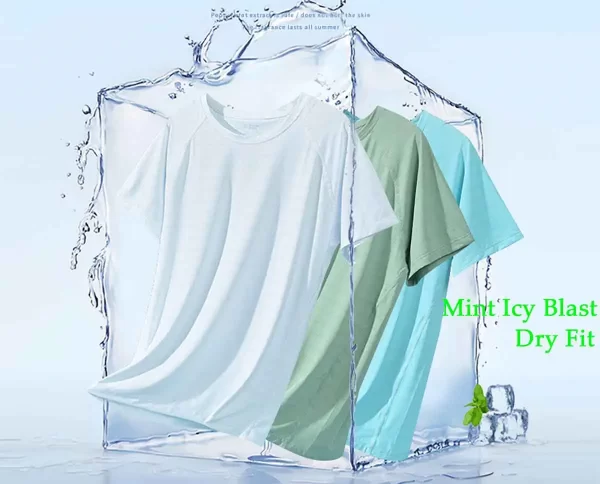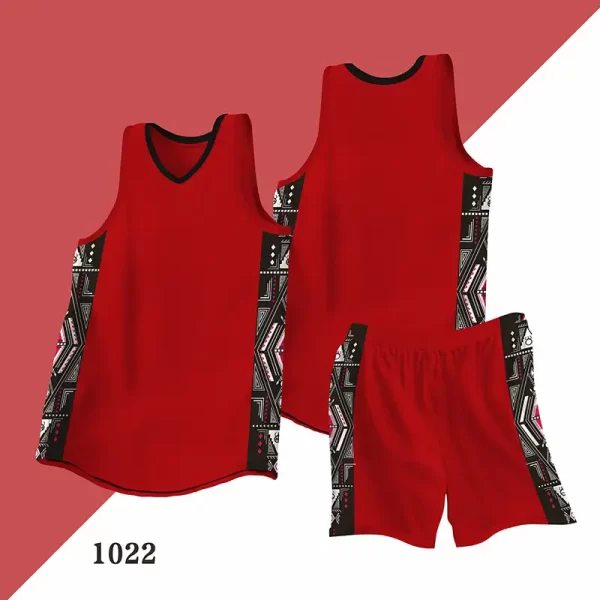Designing and producing processes of basketball jerseys is never easy, it requires a significant amount of effort, creativity, and attention to detail. From the initial design to choosing the right material and arranging the production, the process involves multiple stages.
Let`s take you through the process of designing and producing basketball jerseys, explaining the latest jersey technologies, and how they can help athletes perform better.
What Goes Into Designing a Basketball Jersey
The first thing everyone notices about a basketball jersey is its appearance. The design should represent the team’s identity and help players stand out. Here are the main elements of basketball jersey design:
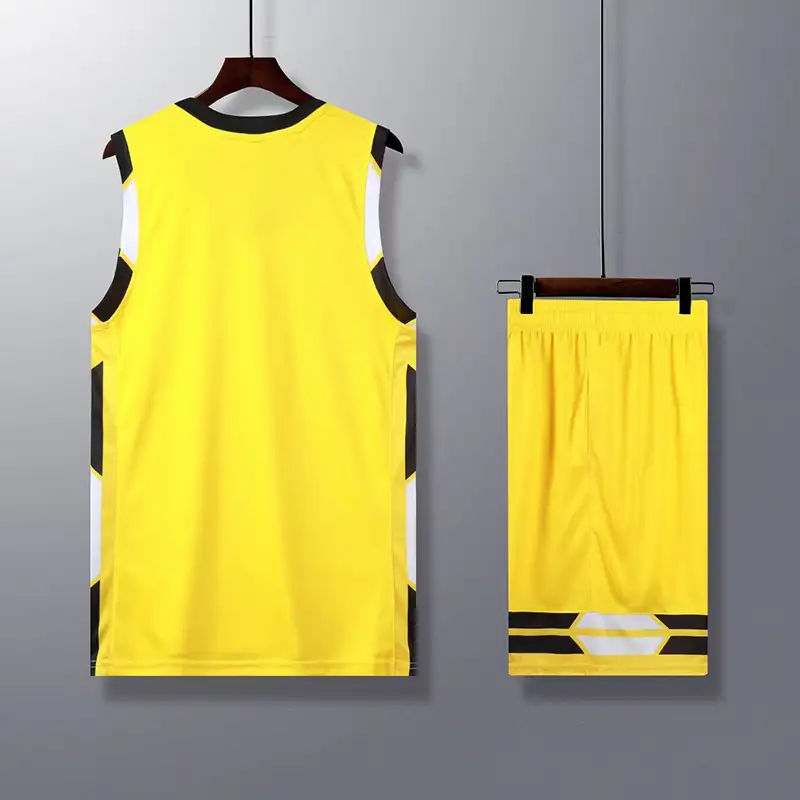
Colors: Bright, bold colors are typical for basketball jerseys because they make it easy to spot players on the court. The team’s colors are a big part of their identity.
Logos and Branding: A team’s logo often appears on the chest or the back, along with the name and number. The placement and size need to ensure comfort without distracting the player.
Designs and Patterns: Custom patterns can make a team’s jersey unique, often reflecting the team’s mascot, city, or history.
A basketball jersey has to do more than just look good, it needs to perform well. When designing, focus on comfort and durability, so the player can focus on the game. Key performance features include:
Breathability: Jerseys need to let air flow so players stay cool during intense play.
Comfort: The fabric should be soft and flexible, allowing the player to move easily without irritation.
Durability: Basketball is a contact sport, so jerseys should be tough enough to last through all the rough movements and frequent washing.
Every player has different preferences when it comes to how their jersey fits. Some like a loose fit for more comfort, while others prefer a snug tight fit for better mobility.
Making sure the jersey and shorts fits the body type is essential to their performance and comfort.
The Technology Behind Loong Sportswear Basketball Jerseys
Moisture-Wicking Fabrics: Stay Dry on the Court
One of the most important things a basketball jersey can do is keep the player dry. Sweat is inevitable during a game, and the right jersey fabric helps pull moisture away from the body, keeping players cool and comfortable.
- Common Fabrics: Polyester and nylon are two popular materials for moisture-wicking jerseys. They draw sweat away from the skin and spread it across the fabric to help it dry faster.
Breathability: Laser-Cut Ventilation and Mesh
A breathable jersey is key to keeping athletes cool during intense games. Mesh and laser-cut ventilation panels are designed to let air flow freely, preventing players from overheating.
- Laser-Cut Ventilation: Small, precise holes are cut into the fabric in areas like the sides or underarms to allow air to circulate, helping players stay cooler for longer.
Compression Technology: Support and Recovery
Compression fabrics have become more common in basketball jerseys. These materials apply gentle pressure to the muscles, helping improve circulation, which may reduce the risk of injuries and assist in muscle recovery after games.
- Benefits of Compression: Compression technology helps keep muscles in place during high-impact moves, reducing soreness and improving performance.
Smart Fabrics: The Future of Jerseys
Smart fabrics are the next frontier in jersey technology. These fabrics use sensors and advanced materials to adjust to the player’s needs, like regulating body temperature or tracking biometrics.
- Sensors: Some basketball jerseys are being designed with sensors that monitor heart rate, temperature, and movement, giving coaches and athletes valuable insights into performance.
Printing Techniques for Customizing Basketball Jerseys
When designing custom basketball jerseys and shorts, the printing technique is critical. The two main methods are sublimation and screen printing.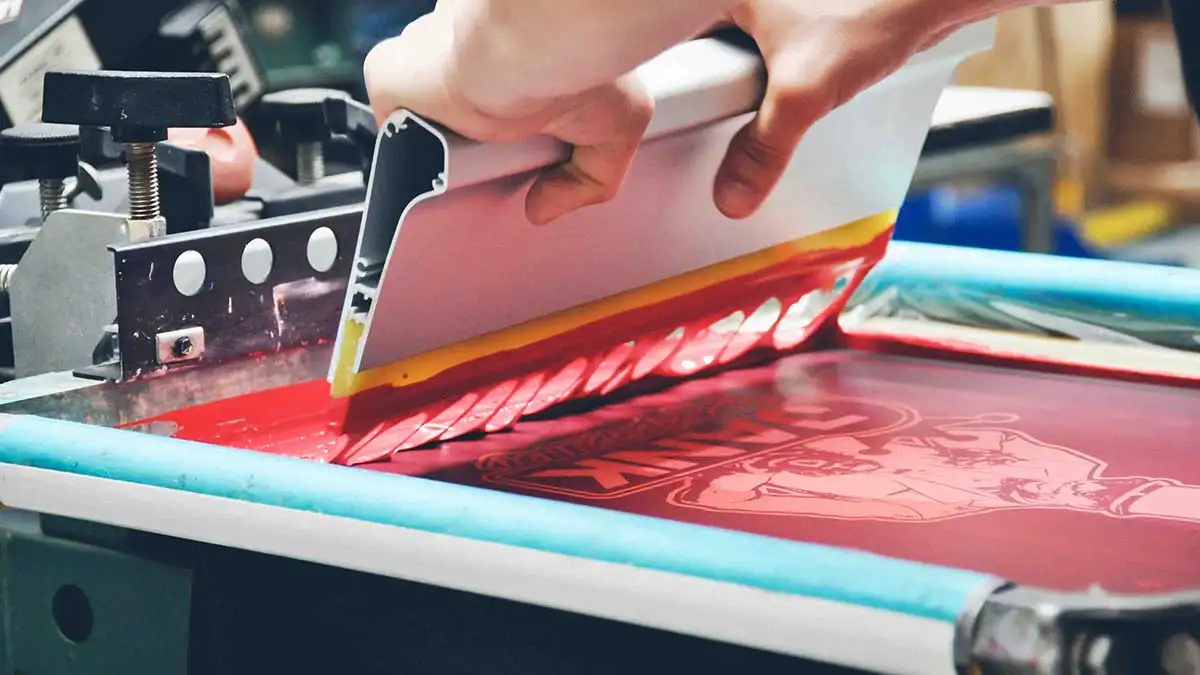
- Sublimation: This method uses heat to transfer dye into the fabric, resulting in vibrant colors and designs that won’t fade or peel.
It is the best option for custom jerseys because it gives high-quality, long-lasting designs.
- Screen Printing: A more affordable option, screen printing uses ink to print the design on top of the fabric. While it is less durable than sublimation, it is a good choice for simpler, bulk designs.
- Embroidery: This technique uses thread to stitch logos or text onto the fabric. It is durable but can be a bit heavier, which may affect comfort during play.
- Heat Transfer: A quicker option, heat transfer involves applying a design onto the fabric using heat and pressure. It is great for adding player names and numbers.
Sublimation printing is ideal for basketball jerseys and shorts because it results in sharp, clear designs that won’t crack, fade, or peel.
Since basketball players move a lot and sweat a lot, you need a print that can stand up to the wear and tear of the game.
Customizing jerseys set with player names, numbers, and team logos is a big trend in basketball. Teams and players want to show off their unique identity, and customization helps create that connection.
What Are The Procedures and Processes Used in Producing Basketball Jerseys at Loong Sportswear
The process of producing basketball jerseys involves several steps, from initial design to final shipping.
Each stage requires careful planning, attention to detail, and collaboration between designers, manufacturers, suppliers, and workers.
If you are interested in visiting Loong Sportswear in Guangzhou, China, please Contact Us now!
Below is a detailed overview of the typical procedures and processes used to produce basketball jerseys sets.
1. Design Phase
- Customer Consultation: The process begins with the customer (team, brand, or individual) providing their requirements. This may include brand guidelines, color schemes, logos, player names, and other customization requests.
- Design Development: A designer creates digital renderings of the jersey, often using software like Adobe Illustrator or CorelDRAW. This includes the team logo, player names, numbers, and any unique design elements (e.g., stripes, patterns, sublimated graphics).
- Prototypes: It is developed, allowing the client to review and make adjustments before moving forward.
- Approval: The design is finalized with input from the client, and approval is given for the prototype. This ensures that every detail (such as color matching, font style, and logo placement) is correct.
- Fabric Choice: The fabric selection is crucial for comfort and performance. Most basketball jerseys use polyester or a polyester/spandex blend for their stretch, moisture-wicking properties, and durability.
- Other Materials: Additional materials such as mesh, spandex, or moisture-wicking linings are chosen for specific parts of the jersey (e.g., side panels for breathability).
- Sustainable Fabrics: Increasingly, manufacturers may opt for recycled polyester or eco-friendly materials to appeal to environmentally conscious consumers.
2. Pre-Production Phase
- Prototype Production: A physical sample of the jersey is made using the selected fabrics. This prototype helps evaluate the fit, feel, and overall design in real life.
- Sample Approval: The sample is sent to the client for final approval. Adjustments are made if necessary, such as changing the size, fit, or placement of graphics.
- Order Confirmation: After sample approval, the order is confirmed, and production can begin.
- Sizing Chart: A detailed sizing chart is finalized for the team, ensuring the correct sizes for all players. This might include youth, adult, and custom sizing.
3. Production Phase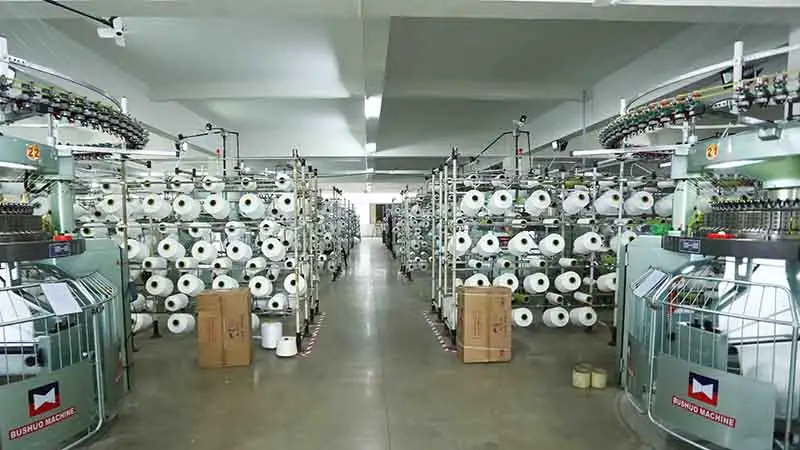
- Fabric Material Preparation: Large rolls of fabric are sourced and prepared for cutting. The fabric must be pre-shrunk or treated to avoid shrinkage during the later stages.
- Cutting the Fabric Cut and Sew:
Using a computerized cutting machine or manual cutting, the fabric is cut into pieces based on the jersey design. This includes cutting the front and back panels, sleeves, collar pieces, and side panels.
Please refer to the page CUSTOM CUT AND SEW for further information. - Pattern Accuracy: Patterns are carefully marked to ensure the correct placement of seams and graphic design elements.
- Screen Printing: If the design includes logos, player names, or team graphics, they are transferred onto the fabric using sublimation printing (for full-color designs and patterns) or screen printing (for solid colors and simple designs).
Please refer to the page Custom Screen Printing for further information.
Sublimation Printing: The design is printed onto transfer paper and then heat-pressed onto the fabric, ensuring the graphics become part of the fabric rather than sitting on top of it.
Please refer to the page Custom Sublimation Printing for further information.
Screen Printing: Ink is applied through mesh screens to transfer designs, commonly used for logos and numbers. - Embroidery: For logos or names that need to have a more durable and textured finish, embroidery is used. The design is stitched directly into the fabric, adding a premium and long-lasting quality.
Please refer to the page Custom Embroidery for further information. - Joining Panels: The individual pieces of fabric are sewn together using industrial sewing machines. This includes attaching the front and back panels, sleeves (if applicable), side panels, and collar.
- Reinforcing Seams: Key seams, especially in high-stress areas like the shoulders and sides, are reinforced to ensure durability during wear.
- Adding Labels and Tags: The manufacturer’s brand label and care instructions are sewn into the inside of the jersey. Custom tags may also be added upon request.
- Mesh Panels: For breathability, mesh inserts or panels may be sewn into the jersey, typically on the sides or back.
- Elastic Waistbands or Arm Openings: Some jerseys include elastic elements to ensure a snug and comfortable fit.
- Heat-Sealed Logos/Numbers: If heat-sealed logos, player numbers, or other elements are requested, they are applied at this stage using heat press technology.
4. Post-Production Phase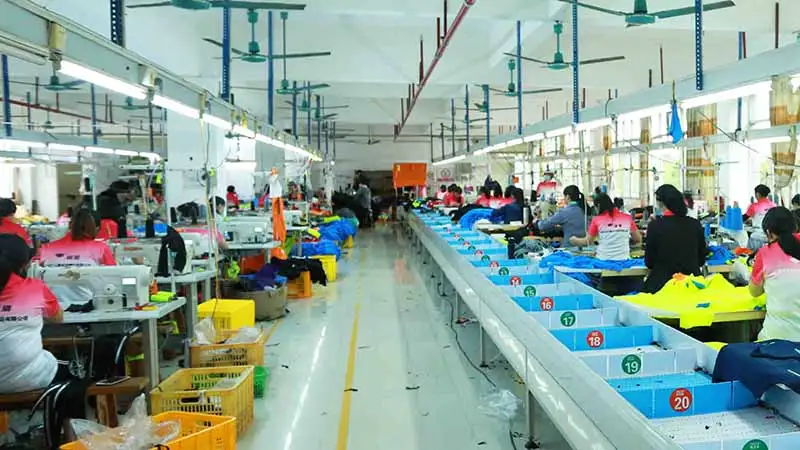
- Inspection: Every jersey undergoes a quality control (QC) process where defects such as loose threads, color discrepancies, or stitching issues are identified.
- Fit Testing: Samples may be tested for fit and comfort to ensure that the jersey performs well under movement and pressure.
- Durability Testing: Some suppliers test the durability of the fabric by subjecting it to wear and washing, ensuring that the fabric doesn’t fade, shrink, or lose its shape.
- Alterations: Any issues identified during QC are corrected. For instance, the jerseys may be re-stitched, re-printed, or resized if there are discrepancies.
- Pressing: The jerseys are pressed to remove wrinkles and ensure they look sharp when shipped.
- Individual Packaging: Each jersey is individually folded and packaged, typically in plastic bags. If the order includes custom tags or hangtags, these are added at this stage.
- Bulk Packaging: Jerseys may be grouped together by size or team and placed into larger shipping boxes for easier transport.
5. Shipping Phase
- Labeling: Shipping labels are applied, which include details such as the destination address, customs paperwork, and tracking information.
- Inventory Management: A final inventory check ensures that all jerseys are accounted for, and the correct quantities are being shipped.
- Domestic Shipping: For local orders within the country of manufacture, jerseys are sent through standard or expedited domestic shipping channels.
- International Shipping: For overseas orders, jerseys are prepared for international shipping. This often involves freight forwarding, customs clearance, and delivery via air or sea freight, depending on the order size and urgency.
- Tracking: Customers receive tracking numbers to monitor the shipment as it moves through the delivery process.
6. Post-Delivery Support
- Customer Satisfaction: After the jerseys and shorts are delivered, manufacturers may contact the client to ensure that the order meets expectations and resolve any post-delivery issues such as incorrect sizes or printing mistakes.
- Returns/Exchanges: If there are any defects or issues with the order, the supplier may offer a return, exchange, or refund process, depending on their policy.
- Repeat Orders: For teams or organizations that require jerseys on a recurring basis, a long-term relationship is often established, making the process more streamlined for future orders.
- Upgrades and New Designs: Teams may request updated designs, new colors, or new technology for their jerseys in subsequent seasons, leading to a new design and production cycle.
The production of basketball jerseys and shorts is an integrated process that involves design, material selection, printing, sewing, and quality control. From conceptualization to delivery, each step is designed to ensure that the final product meets the team’s performance and aesthetic requirements.
Understanding each phase of the production process helps ensure that the jerseys are high-quality, durable, and meet the expectations of the players and customers.
Loong Sportswear aims to produce high quality and durable basketball jerseys that meet customer’s satisfaction and enhance their business in the market. Here is a high quality basketball jersey that we have made.
How Basketball Jersey Technology Helps Athletes Perform Better
From moisture-wicking fabrics to compression technology, the latest innovations in jersey technology help players stay comfortable, avoid injuries, and improve their performance.
- Better Mobility: Stretch fabrics allow players to move freely, without restriction, which is crucial in basketball jerseys.
- Faster Recovery: Compression fabrics improve blood circulation, helping athletes recover quicker and stay in top form.
With new materials, smarter fabrics, and innovative designs, jerseys are becoming better at supporting athletes needs.
Whether it is advanced moisture-wicking, better compression, or stylish designs, the next generation of jerseys will help players perform better, feel more comfortable, and look great.
What Are Some New Materials and Technologies Used in Manufacturing Basketball Jerseys
Recent innovations in basketball jersey set manufacturing have focused on enhancing performance, comfort, and sustainability. Here are some new materials and technologies being integrated into basketball jerseys.
1. Moisture-Wicking Fabrics
- Microfiber Technology: Fabrics like polyester microfiber are now designed to draw moisture away from the body, keeping players dry and cool during intense play. These fabrics are lightweight and breathable.
- Dri-FIT and Climacool: Brands like Nike (Dri-FIT) and Adidas (Climacool) have advanced moisture-wicking materials that not only keep players comfortable but also reduce chafing and bring coolmax.
2. Sustainable Fabrics
- Recycled Polyester: Many manufacturers are switching to recycled polyester to reduce environmental impact. These fabrics are made from repurposed plastic bottles, offering the same performance benefits as virgin polyester while being eco-friendly.
- Organic Cotton: Though less common, organic cotton blends are being used in some jersey designs, focusing on sustainability without compromising comfort.
- Bio-based Fabrics: Emerging technologies include fabrics derived from sustainable sources like algae and plant fibers, offering biodegradable alternatives to traditional materials.
3. 4D Knit Technology
This innovative knitting technology provides a seamless, 3D structure that adapts to the player body.
It offers better flexibility, breathability, and stretchability compared to traditional fabrics.
This technology can also reduce weight while improving comfort and durability.
4. Anti-Microbial and Anti-Odor Treatments
- Silver Ion Technology: Fabrics treated with silver ions help prevent bacteria buildup, which causes odor and skin irritation. This technology is now more common in performance jerseys.
- Antimicrobial Coatings: Manufacturers are incorporating advanced coatings that inhibit bacterial growth and help maintain freshness throughout the match.
5. Compression Fabrics
- Some jerseys and shorts sets are designed with compression technology to provide support to muscles during play. These jerseys improve blood circulation, reduce muscle fatigue, and offer improved performance recovery.
- Dynamic Compression Zones: Jerseys now feature targeted compression in key areas like the back, shoulders, and core, offering improved muscle support without restricting movement.
6. Breathable Mesh Panels
- Laser-Cut Mesh: Lightweight, laser-cut mesh inserts are used in high-heat areas like the back and sides to improve ventilation and airflow. This technology is especially important for players in high-intensity sports like basketball, where temperature regulation is crucial.
- Laser Perforation: Small holes or perforations in the fabric allow for better airflow while reducing weight.
7. Smart Fabrics and Embedded Sensors
- Wearable Tech: Some brands are experimenting with integrating sensors into jerseys that can monitor a player heart rate, movement patterns, and body temperature. This data can help coaches optimize player performance and track recovery times.
- Stretchable Conductive Fabrics: These fabrics allow for better integration of electronic sensors without sacrificing comfort or flexibility.
8. UV Protection
- Some jerseys come equipped with UV-protective coatings or are made from fabrics that naturally block harmful sun rays. This is especially useful for outdoor matches and practices.
9. Customizable and Adaptive Fabrics
- Heat-Sealed Graphics: The latest jerseys use heat-sealed rather than stitched logos, team names, and numbers to create a smoother, more durable finish that resists wear and tear.
- Adaptive Color Changing Fabrics: Advanced materials that change color based on the temperature or the player body heat are still in development, offering a futuristic aesthetic and additional personalization options.
10. Smart Performance Fabrics
- Phase-Change Materials (PCMs): These materials adapt to temperature fluctuations by storing and releasing heat, which helps keep players comfortable in varying environments, from cold gyms to hot outdoor courts.
These advancements are aimed at improving player performance, comfort, and longevity of the jerseys, while also incorporating more sustainable materials for environmental benefit.
What Are Some Common Issues that Occur During Designing and Manufacturing Custom-made Basketball Jerseys?
Designing and manufacturing custom-made basketball jerseys and shorts set can be a rewarding but challenging process. Several common issues arise during production, ranging from design-related concerns to technical and logistical problems.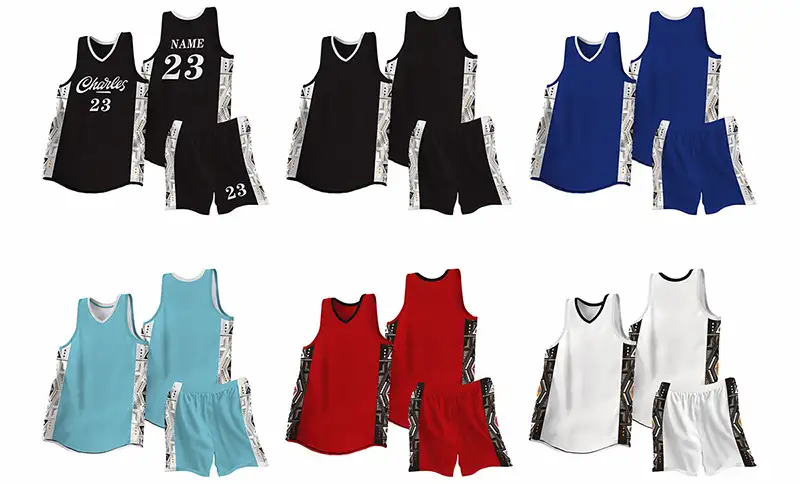
Here are some of the most frequent challenges encountered.
1. Material Selection
- Comfort vs. Durability: Finding the right balance between comfort and durability is a challenge. While lightweight, breathable fabrics are essential for performance,
they also need to withstand the wear and tear of intense athletic activity. Choosing materials that are both functional and durable can be difficult. - Fabric Shrinkage: Some fabrics, especially natural ones like cotton or blended materials, may shrink after washing. This can result in jerseys that no longer fit well, especially for players who rely on precise sizing.
- Moisture-Wicking Efficiency: Ensuring that the fabric has adequate moisture-wicking properties is critical for player comfort. If the material does not perform as expected, it can lead to discomfort, increased sweating, and even chafing.
2. Sizing and Fit Issues
- Inconsistent Sizing: Sizing discrepancies can occur between different manufacturers or even within the same batch. Custom jerseys need to be sized carefully to accommodate the player body type, as poorly fitting jerseys can cause discomfort and hinder performance.
- Customization vs. Standardization: Designing jerseys for a team where each player might have a different body shape requires balancing customization with standard patterns to maintain consistent production quality.
Achieving this balance without making the jerseys too expensive or time consuming to produce is tricky.
3. Design Complications
- Complex Graphic Designs: Custom logos, intricate designs, and color schemes can be difficult to reproduce accurately on fabric.
Some designs may not translate well to the jersey material, especially when using techniques like screen printing or embroidery. - Color Matching: Getting the exact colors for a team’s branding or logo can be challenging. Different fabrics and printing methods may cause slight variations in color, making it difficult to match team colors precisely.
- Logo Placement and Sizing: Ensuring that logos, names, and numbers are placed correctly and remain legible is essential. Inaccurate placement or poor sizing can make the jersey look unprofessional, especially when it involves sponsor logos, team names, or player numbers.
4. Printing and Embroidery Issues
- Fading and Cracking: Over time, prints (especially screen prints and heat transfers) can fade or crack due to constant washing, stretching, and exposure to sweat. This is particularly problematic for jerseys that are worn frequently during games.
- Embroidery Quality: While embroidery can provide a more premium look, it can also create issues with bulkiness or stiffness, particularly around necklines, seams, or underarms. It also may not always perform well with finer details, such as small text or intricate logos.
- Print Alignment: Ensuring that the print (whether numbers, names, or logos) is aligned properly can be challenging, especially with complex designs. Misalignment can lead to aesthetically unpleasing results.
5. Production Delays
- Long Lead Times: Custom jerseys often require longer lead times due to the complexity of design, fabrication, and customization. Any issues with sourcing materials or delays in the production process can result in missed deadlines.
- Supplier Reliability: Working with third-party suppliers for fabrics, printing, and embroidery services can introduce risks related to quality control, shipment delays, or vendor reliability.
6. Sizing and Quantities
- Minimum Order Quantities (MOQs): Some manufacturers require a minimum order, which can be an issue if only a small team or group of players needs jerseys. This can lead to excess inventory, causing waste and additional costs.
- Non-Standard Sizing: Custom sizing needs can make it difficult to match industry standards, especially for players who fall outside typical size ranges. Accommodating all players with custom sizing can complicate production and increase costs.
7. Quality Control
- Inconsistent Stitching: Poor quality control during stitching and assembly can result in uneven hems, seams, or loose threads, impacting the durability and aesthetics of the jersey.
- Fabric Imperfections: Fabric rolls may have defects, such as small holes, discoloration, or irregularities in texture, which can be hard to detect until the jerseys are almost finished.
8. Cost Constraints
- High Customization Costs: Custom-made jerseys often come with a premium price tag due to the cost of design, materials, and labor. Customization options (e.g., unique designs, player names, numbers, and special fabrics) can make it more difficult to stay within budget.
- Economies of Scale: Small runs of custom jerseys (such as for a youth team or individual players) don’t benefit from economies of scale, which can result in higher per-unit costs. This can make custom jerseys less cost-effective for smaller teams.
9. Heat and Pressure Damage
- Overheating During Printing: When heat transfer or sublimation printing is used, excessive heat can sometimes damage the fabric or cause it to shrink, warp, or become too stiff. Finding the right balance between the heat applied and fabric resilience is essential.
- Pressure Marks from Sublimation: Sublimation printing requires high heat and pressure, which can sometimes leave unwanted pressure marks or distortions on the fabric, especially on lighter or more delicate materials.
10. Environmental Impact
- Waste from Prototype Testing: Creating multiple prototypes to ensure the design is right can result in material waste. Finding sustainable ways to test designs, such as using digital prototypes or smaller test batches, is increasingly important.
- Eco-friendly Materials: As consumer demand grows for sustainable and eco-friendly products, manufacturers are being pressured to use materials that are both high-performing and environmentally responsible.
Finding sustainable fabrics that perform well in athletic settings can be more expensive and harder to source.
11. Shipping and Delivery
- Shipping Costs: Due to the custom nature of the jerseys, shipping costs can be quite high, especially if the jerseys are being sent internationally or need to be expedited for an event or season opener.
- International Shipping Issues: If jerseys are being produced overseas, there may be customs delays or complications with international regulations, affecting the timely delivery of the products.
12. Team and Player Expectations
- Player Satisfaction: Custom-made jerseys need to satisfy the players’ expectations for comfort, fit, and style. Failure to meet these expectations can lead to dissatisfaction or reluctance to wear the jersey.
- Last-Minute Changes: Sometimes teams or players request changes to the design, colors, or even player names/numbers at the last minute. These changes can delay production and cause extra costs.
13. Sizing for Special Populations
- Youth vs. Adult Sizes: Designing jerseys that fit players across different age groups (youth, adult, etc.) while maintaining a consistent style and quality can be difficult.
Young players may need more flexible or adjustable fits, while professional players require a more performance-focused design.
Addressing these challenges requires clear communication with manufacturers, careful planning, and a thorough understanding of materials and techniques.
If you have any further questions, please don’t ever hesitate to Contact Us now!
Some Questions for Loong Sportswear Basketball Jersey Supplier in Guangzhou, China.
When sourcing basketball jerseys and shorts from Loong Sportswear in Guangzhou, China, there are a few common questions and considerations that buyers should keep in mind.
Guangzhou is a major manufacturing hub, and Loong Sportswear is specializing in sportswear production.
Below are some of the popular questions that buyers typically have when working with us.
1. What fabrics do you use for basketball jerseys?
High-performance fabrics like polyester, spandex, or recycled materials. Eco-friendly fabrics or more advanced moisture-wicking options are available.
2. Can I customize the jersey with my team’s logo, player names, and numbers?
Yes, you can, we offer a wide range of customization services, you can Inquire about embroidery, screen printing, heat transfer printing, or sublimation printing, and we can support you with samples for validating quality.
3. What is your minimum order quantity (MOQ)?
Customers usually ask about MOQ to determine whether the supplier fits their needs. At Loong Sportswear, the MOQ is normally 300 pcs for standard orders.
And we are glad to negotiate for a lower MOQ if you only need a small batch of jerseys. we are also able to lower MOQs for initial trials or sample orders.
For further specifications, please see a basketball jersey product as an example.
4. Do you provide size charts and fit guides?
Yes, we do, we provide detailed size charts so that our customers can confirm and ensure proper sizing and avoid issues with mismatched fits.
5. How do you ensure the quality of your jerseys?
At Loong Sportswear, we have a strict quality control system throughout all stages of production to make sure that we are making top quality basketball jerseys, such as fabric inspections, sewing checks, and finishing processes.
We also follow these quality control procedures to assess the quality control process and avoid issues with poor quality jerseys.
6. What printing and embroidery techniques do you use?
Different types of printing and embroidery techniques are used, such as sublimation printing, screen printing, heat press, and embroidery (direct embroidery or padded embroidery), we produce durable and high quality prints, logos, and player numbers which stand up to wear, washing, and moisture.
7. Can Loong Sportswear provide samples before the full order?
Yes, we can, we provide samples before the full order so that the clients can verify quality and design accuracy before committing to bulk production. It is very important for verifying the fit, material and printing quality.
8. How long will it take to produce and ship the jerseys?
Normally, it takes about 2 to 4 weeks to produce the jerseys, the exact lead time depends on the order quantity and specification, the lead time for customized order needs to be confirmed case by case.
Regarding the shipping time, it various a lot based on different shipping method, normally air shipping is the fastest, but it costs the most, sea shipping is the slowest, but it costs less.
Train shipping is cost effective for some countries.
We provide daily or weekly production report to the clients when required.
9. What are your payment terms?
Typically, the payment terms for international orders are often 30% deposit with order confirmation and a 70% balance before shipment. Favorable payment terms are negotiable.
The payment term should be 100% paid for sample or small orders.
10. Do you offer after-sales support or a return policy?
We understand that there could be a small percentage of defective rate with the order, such as incorrect sizes, colors, or quantities, in this case, after-sales support or a return policy is available.
Loong Sportswear is often at the forefront of adopting innovative manufacturing methods, so it is worth asking about new materials or technologies we are experimenting with.
This will help us get the best quality products at competitive prices, delivered on time.
If you would like to learn more about us, please refer to this page About Loong Sportswear.
And Contact Us directly for further communication.
Suggestions and Tips for Working with Basketball Jersey and Shorts Suppliers in Guangzhou, China.
By asking the right questions and giving clear specifications, we can ensure a smooth process between customer and supplier when sourcing custom basketball jerseys from Loong Sportswear in Guangzhou.
This will help you get the best quality products at competitive prices, delivered on time.
1. Clear Communication on Design Specifications
- Suggestion: Provide your designs in high-resolution formats (e.g., AI, PDF, or SVG) to avoid misunderstandings. Make sure to specify the placement, color codes, and size of logos, numbers, and names.
- Tip: Use digital prototypes or design templates to clearly illustrate your vision before starting production.
2. Focus on Sample Approval
- Suggestion: Always request and approve samples before committing to a large order. This allows you to check the quality, design, fit, and color accuracy.
- Tip: Check the samples for durability, moisture-wicking capability, and overall craftsmanship.
3. Negotiate on Price and Terms
- Suggestion: Don’t hesitate to negotiate the price, especially if you’re ordering in bulk or developing a long-term relationship. Also, be mindful of hidden costs such as shipping, import duties, and customs fees.
- Tip: Get quotes from multiple suppliers and compare prices, quality, and shipping terms to ensure you’re getting the best deal.
4. Understand Production Lead Time and Delivery Schedule
- Suggestion: Be realistic about your timeline, especially if your order is time-sensitive. Suppliers in Guangzhou can sometimes experience delays due to the high demand, so always build in extra time for unexpected delays.
- Tip: Ask for updates during the production process to avoid last-minute surprises.
5. Prioritize Quality Control
- Suggestion: If you are ordering a large quantity, consider hiring a third-party quality inspector in Guangzhou to check the production process and the final batch of jerseys. This ensures you get exactly what you ordered.
- Tip: If possible, visit the factory or arrange for a video tour of the production facilities to verify quality standards.
6. Review Shipping and Customs
- Suggestion: Clarify shipping methods, costs, and timeframes with the supplier in advance. If you’re shipping internationally, confirm the necessary customs documentation to avoid delays at the border.
- Tip: Consider working with a freight forwarder to help navigate international shipping, especially for bulk orders.
7. Request Customization Options and Technology
- Suggestion: Ask the supplier about advanced printing techniques such as sublimation, 3D printing, or heat-seal transfers for more intricate designs.
- Tip: Discuss any additional features you may want, like breathable mesh panels, UV protection, or custom labels.
8. Build a Long-Term Relationship
- Suggestion: If you plan on ordering jerseys regularly, building a strong relationship with your supplier can lead to better terms, faster delivery, and more consistent quality.
- Tip: Establish clear expectations early on and maintain open communication with the supplier for ongoing orders.
9. Verify Compliance with Industry Standards
- Suggestion: Ensure the supplier follows ethical manufacturing practices, especially in terms of labor conditions, environmental impact, and product safety. Some suppliers may hold certifications such as ISO, CE, Oeko-Tex, or BSCI.
- Tip: You can ask the supplier for certifications or references to confirm their compliance with industry standards.
10. Discuss Future Innovations
- Suggestion: Ask the supplier about their capabilities to work with new fabrics, smart technology (e.g., embedded sensors), or eco-friendly materials as these features could elevate your product offerings in the future.
- Tip: Suppliers in Guangzhou are often at the forefront of adopting innovative manufacturing methods, so it’s worth asking about new materials or technologies they are experimenting with.
Any further questions about how to work with Loong Sportswear, please Contact Us freely!
 |
|---|
| Luke Xiang H.H, Co-owner of Guangzhou Loong Sportswear |
| If this article helps you with a better understanding of how to design and produce basketball jerseys, and if you are seeking for wholesale basketball jerseys and shorts from Guangzhou China, please don’t ever hesitate to CONTACT US! |
